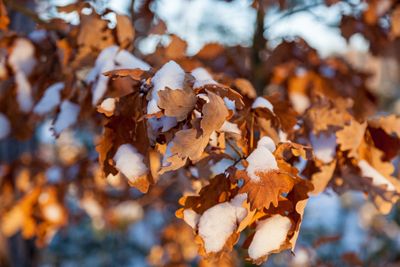What Does Marcescence Mean?
What is marcescence? Have you ever seen a tree that has retained its leaves through the winter? Depending upon the variety, the tree may be experiencing marcescence. This occurs when some deciduous trees, usually beech or oak, fail to drop their leaves. This results in trees that are full or partially full, covered in brown, papery leaves. Winter marcescence is caused by the lack of enzymes produced by the tree. These enzymes are responsible for producing an abscission layer at the base of the leaf stem. This layer is what allows the leaf to easily be released from the tree. Without this, it is likely that the leaves will “hang on” throughout even the coldest periods of winter.
Reasons for Marcescent Leaves
Though the exact reason for marcescent leaves is not known, there are many theories regarding why some trees may choose to retain their leaves throughout the winter. Studies have shown that the presence of these leaves may help to deter feeding by large animals like deer. Less nutrient-dense brown leaves surround the buds of the tree and protect them. Since marcescent leaves can be observed most commonly in juvenile trees, it is often thought that the process does offer growth advantages. Smaller trees often receive less sunlight than their taller counterparts. Slowing the process of leaf loss may be beneficial in maximizing growth before winter temperatures arrive. Other reasons which trees retain leaves suggest that dropping the leaves later in the winter or early spring helps to ensure that the trees receive adequate nutrients. This seems especially true in cases where the trees are grown in poor soil conditions. Regardless of the reason, trees with winter marcescence can be a welcome addition to the landscape. Not only can the beautiful leaves offer texture in otherwise bare scenery, but they also provide protection for both the tree and native winter wildlife.
